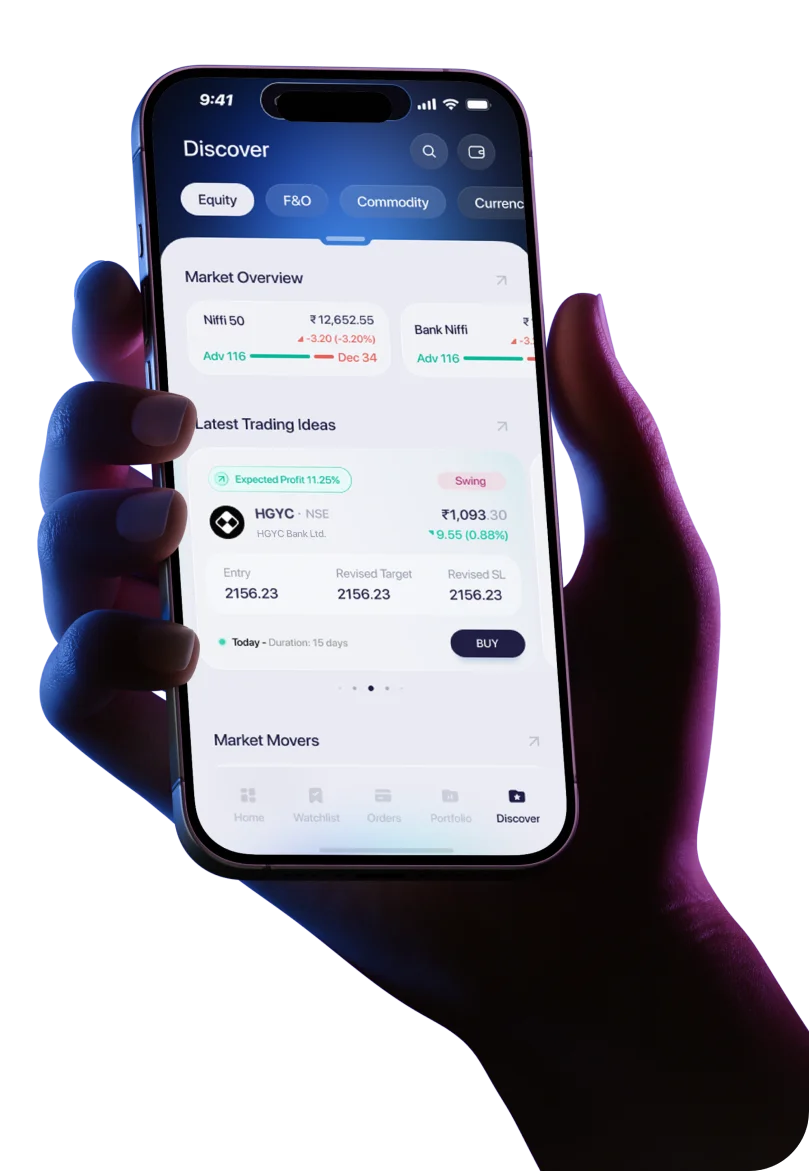Introduction:
Every time markets swing sharply—whether upward or downward—you’ll hear experts and news anchors talk about “volatility.” It is a word that often sends chills down the spine of new investors, while seasoned traders see it as an opportunity. But what exactly does stock market volatility mean, and why is it so important for Indian investors to understand?
Simply put, stock market volatility is the degree of variation in stock prices over time. It reflects how much and how quickly the prices of stocks, indices like the Nifty 50 or Sensex, or the overall market move up and down.
In India, volatility plays a central role in how portfolios behave, how traders deploy strategies, and even how investor emotions fluctuate. For example, during the March 2020 COVID crash, the Nifty plunged nearly 40% in just one month, and the India VIX shot up above 80—signaling extreme panic. Yet, long-term investors who held their ground eventually witnessed one of the sharpest recoveries in history.
This guide will break down the concept of volatility, its types, causes, measurement methods, impacts on investors, and practical strategies to deal with it. We’ll also look at historical lessons and FAQs to give you a complete picture.
What is Stock Market Volatility?
Volatility refers to the pace and magnitude of price movements in the market. If prices fluctuate wildly within short periods, the market is said to be highly volatile. If prices are relatively stable, the market is low in volatility.
Volatility vs. Risk
Although the two are often used interchangeably, they are not the same.
- Risk refers to the probability of permanent capital loss.
- Volatility simply indicates temporary price fluctuations.
For example, if Reliance Industries moves ±2% every day for a week, that is volatility. But unless you sell at the wrong time, it may not translate into risk.
Why is Understanding Volatility Important?
- For investors: It helps in making rational decisions rather than panicking during price swings.
- For traders: Volatility directly impacts option pricing and strategy selection.
- For policymakers and regulators: It indicates overall market stability.
In short, volatility is not inherently good or bad. It is a natural feature of markets and often creates opportunities for disciplined investors.
Types of Stock Market Volatility
There are multiple ways to classify volatility. The most widely used are historical, implied, and realized volatility.
1. Historical Volatility (HV)
This is based on past price movements of a stock or index. For example, if Nifty 50 prices fluctuated by 15% annually over the last year, its historical volatility is 15%.
- Use: Helps understand how much risk a stock/index has shown historically.
- Limitation: Past performance does not always predict future behavior.
2. Implied Volatility (IV)
Derived from option prices, implied volatility reflects the market’s expectation of future fluctuations. If option premiums are high, it means traders expect big moves.
- Use: Crucial for options traders.
- Example: Before the Union Budget, India VIX (a measure of IV) often rises due to uncertainty.
3. Realized Volatility
This measures the actual observed volatility in stock returns over a period, typically shorter (days or weeks).
- Use: Helps validate if implied volatility predictions were accurate.
Comparison Table
Type of Volatility | Based On | Time Frame | Who Uses It Most |
|---|---|---|---|
Historical | Past stock/index price data | Weeks/months/years | Long-term investors, analysts |
Implied | Option premiums & market expectations | Next 30 days (common) | Options traders, institutions |
Realized | Actual observed returns | Daily/weekly basis | Risk managers, traders |
Together, these types provide a 360-degree view of market behavior.
How is Volatility Measured?
Several metrics are used to measure volatility. Let’s look at the most important ones for Indian markets.
1. Standard Deviation
This is the most basic mathematical measure. A higher standard deviation means greater price swings. For example, if Infosys has an average return of 1% with a deviation of ±5%, its volatility is higher than HUL with ±2%.
2. Beta
Beta measures a stock’s volatility relative to the overall market.
- Beta = 1: Moves in line with the market.
- Beta > 1: More volatile than the market (e.g., small-cap stocks).
- Beta < 1: Less volatile (e.g., FMCG stocks).
3. VIX (Volatility Index)
The India VIX, published by NSE, measures expected market volatility based on Nifty options. Often called the fear gauge, it spikes in times of panic. For example, during March 2020, India VIX surged above 80, compared to normal levels of 12–20.
Visual Perspective (Textual):
If you plot Nifty vs India VIX, you’ll notice that when VIX rises sharply, Nifty often falls, and when VIX cools down, markets stabilize.
These tools help traders and investors assess current conditions and plan strategies accordingly.
Causes of Stock Market Volatility
Volatility doesn’t arise randomly. It is usually triggered by specific factors:
1. Economic Factors
- Inflation data, GDP growth, and interest rates directly impact valuations.
- Example: RBI’s surprise rate hikes can trigger sudden Nifty moves.
2. Global Events
Geopolitical tensions, oil price shocks, and pandemics influence Indian equities.
- Example: Russia-Ukraine conflict caused volatility in IT and energy stocks.
3. Investor Sentiment
Fear and greed drive sharp moves. Panic selling during COVID crash or euphoric buying during bull runs are sentiment-driven volatility.
4. Technical/Market Factors
- Liquidity crunches, margin calls, or algorithmic trading can lead to flash crashes.
- Example: 2010 US flash crash showed how automated trading can trigger extreme moves.
In India, major election results or Union Budget announcements are also frequent volatility drivers.
Impact of Volatility on Investors
Volatility affects investors differently based on their approach.
- Short-Term Traders: Volatility is a double-edged sword—more opportunities but also higher risks. Options traders thrive in high volatility, while equity intraday traders may struggle.
- Long-Term Investors: For them, volatility is largely noise. What matters is whether they can stay invested through downturns.
- Emotional Impact: Panic, fear, and overtrading are common mistakes during high volatility. Retail investors often exit at the worst time, locking in losses.
- Positive Side: Volatility can offer buying opportunities. For instance, quality blue-chip stocks were available at deep discounts during March 2020.
Strategies to Handle Market Volatility
For Long-Term Investors
- Stay Invested: Markets eventually trend upward despite volatility.
- Continue SIPs: Rupee-cost averaging benefits investors during downswings.
- Diversify: Spread across sectors and asset classes to reduce risk.
For Traders
- Use Stop-Losses: Protects against extreme intraday swings.
- Hedging with Options: Buy protective puts or use spreads to manage risk.
- Non-Directional Strategies: Straddles/strangles during high IV; spreads during low IV.
Historical Perspective & Lessons
Looking at history, volatility is not new—it is part of the market’s DNA.
- 2008 Global Financial Crisis: Nifty plunged over 50%, but recovered strongly in the following years.
- 2013 Taper Tantrum: Emerging market currencies and equities fell sharply.
- 2020 COVID Crash: Nifty fell nearly 40% in weeks, but reached new highs within 18 months.
The lesson? Despite short-term turbulence, the long-term trajectory of Indian markets has been upward, supported by economic growth and corporate earnings.
For investors, the key is discipline and patience. Volatility is temporary, but quality investments compound over time.
Conclusion :-
Stock market volatility is often misunderstood as something to fear. In reality, it is simply the degree of movement in prices—a reflection of uncertainty, changing expectations, and investor psychology.
- For traders, volatility creates opportunities to profit from swings.
- For investors, it serves as a reminder to stay disciplined and focused on fundamentals.
- For everyone, tracking measures like India VIX, beta, and historical volatility provides valuable insights into risk.
FAQs
- What is stock market volatility in simple terms?
It is the extent to which stock prices move up and down in a given time. High volatility means large swings, while low volatility means stability. - Is volatility good or bad?
Neither. It depends on perspective. Traders thrive on volatility, while long-term investors may see it as temporary noise. - How can I protect my portfolio from volatility?
By diversifying, using stop-losses, and hedging through options. SIPs also help average costs during volatile times. - What is the difference between volatility and risk?
Volatility is temporary fluctuation. Risk is the chance of permanent capital loss. A stock may be volatile but not necessarily risky if fundamentals are strong. - How does VIX indicate volatility?
The India VIX, derived from Nifty options, shows expected market volatility for the next 30 days. A higher VIX indicates fear and uncertainty; a lower VIX signals calmness.




 Easy & quick
Easy & quick
Leave A Comment?